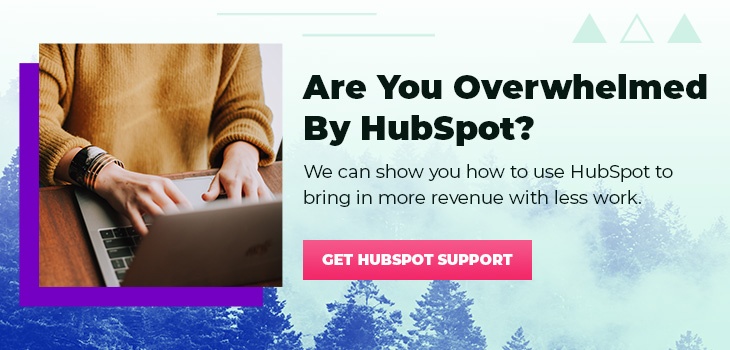Isn’t there an app for that?
Company employees use an average of eight different software tools each day, a number we can expect to increase in the future. The bigger the company is, the more tools they’re likely to use.
From managing your database to automating your emails to adding 1:1 videos to your sales materials, marketers use all kinds of apps to make their marketing machine run. The trick is getting all those apps to work together.
That’s where integrations come in. Integrations use APIs to send data between different apps, giving them the power to work together and achieve marketing genius. Things like your CRM can be connected to your email marketing platform, allowing you to segment your email lists based on the data your CRM is gathering. Or maybe you use a video platform like Vidyard that can integrate with your marketing platform to make it easier to send 1:1 videos. The opportunities within integrations are endless, but not all integrations are created equal.
Oftentimes, if a platform says it has an integration with your software app, it doesn’t mean it’s plug-and-play. Sometimes you can do it in less than 10 clicks, and sometimes it requires meeting with a specialist and setting up a custom connection. If you’re trying to decipher how two of your apps connect, and all the technical jargon that surrounds the subject, this article is for you.
Types of Integrations
It can be really frustrating to read the word “integrations” on a software’s website only to find out later that it doesn’t work quite like you thought it would. Below we’re going to break down four different types of integrations so you know what questions to ask your software provider or development firm before you pull the trigger on that fancy new tool for your tech stack.
Native
Native integrations usually provide the most complete functionality for passing information between two apps. They are pre-built and supported by the company that developed the app. For example, HubSpot has native integration for Salesforce that allows a marketer to easily connect the two with a few clicks. These integrations are typically free, and the software companies themselves support them. That means fewer variables that could cause issues and they typically work better because they have direct access to each of the apps instead of going through a third party.
Simple Connector
A simple connector is an app created by a third party that connects two other apps. They’re like that one friend at dinner that passes all the food from the server to the rest of the table. The server’s arms aren’t long enough to pass the food directly to you, but your best friend Joe is happy to be the middleman who delivers your plate. Apps like Zapier and PieSync are just like Joe, and they’re called “simple connectors.”
The downside to simple connectors is that they can only pass some data between the apps, and typically the numbers, people, companies and products are the pre-configured elements that can sync. These connectors might be enough for the basic data you’re trying to move from one platform to another, but given the number of fields that may be left out in the sync, it could leave you wanting more. It's great if you need just a piece of contact information, like a name and email, from one system to another, but if you need more advanced access to the rest of your data, one of the options below might be a better choice.
Custom Integrations
If there isn’t a native integration or connector available, then you’ll have to build a custom integration. This isn’t an overwhelming project, it just takes more manpower to create. Whoever you hire to build a custom integration will ask if your software has an “open API,” so be sure to check that beforehand. Most software will list whether or not they have an open API under their integration information or as a feature of their tool.
Custom integrations will vary depending on the software, as each platform can present unique challenges. Custom integrations usually require a larger setup fee and managed services to keep it running.
When to Integrate
Not every tool in your stack needs to integrate with others. So how do you determine which ones to buddy up?
We always ask one question: Where does your data live? One of the biggest issues we see with tech stacks is that their data is all spread out. They have email lists in one app, their CRM in another and sales data in another. To keep a clean database, you need all of your information to live in one place and connect to other apps that use or gather data.
Your payroll software probably doesn’t need to be connected to your sales CRM, but it might be useful to have the CRM connected to your email software. The end goal is always to create clean and actionable data. If your data is clean but doesn’t live in the same place, it’s usually not actionable. That means you can’t use it to inform how you’re marketing or who you’re marketing to.







